History behind Queen’s most famous crown
The Queen once joked her crown was so heavy it could “break your neck”. But what’s the story behind the monarch’s most recognisable adornment?
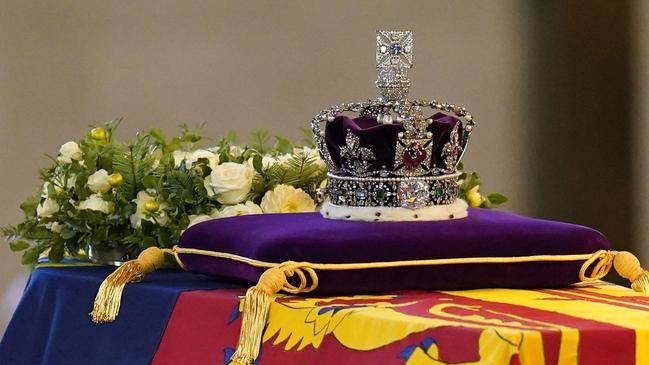
Royals
Don't miss out on the headlines from Royals. Followed categories will be added to My News.
The Imperial State Crown resting on a purple velvet cushion on the Queen’s coffin at Westminster Hall is the most familiar of all her crowns.
Worn by the monarch at her 1953 coronation, it is made of gold and encrusted with 2868 diamonds, 17 sapphires, 11 emeralds, 269 pearls, and four rubies.
It holds some of the Crown Jewels’ most famous pieces including the Black Prince’s Ruby, the Stuart Sapphire, and the Cullinan II diamond.
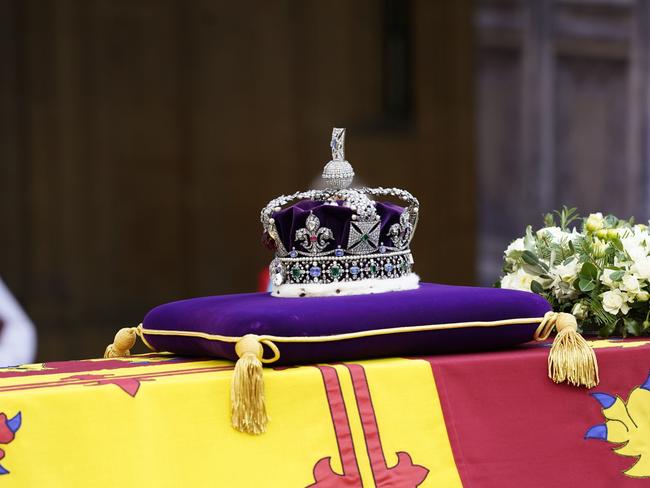
In a 2018 BBC documentary about her coronation, the Queen amused viewers by manhandling the weighty garland, turning it round and declaring: “This is what I do when I wear it.”
The Queen once joked that even the Imperial State Crown was so heavy that if she looked down while wearing it, “it would break your neck”.
“Fortunately, my father and I had the same sort of shaped head, but once you put it on it stays. It just remains, itself,” she told the BBC in 2018.
“You can’t look down to read the speech: you have to take the speech up,” she said of her annual address to parliament.
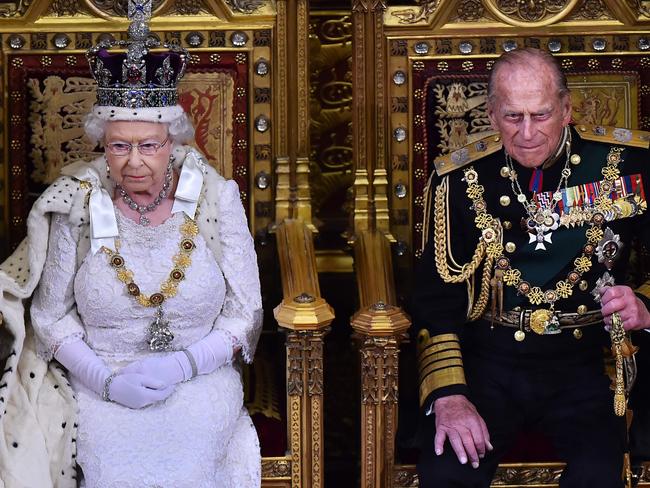
“So there are some disadvantages to crowns but otherwise they’re quite important things,” she smiled.
Given its weight, she stopped wearing the Imperial State Crown to the state opening of parliament in her 90s. Instead, it was carried in on a cushion.
The main diamond at the front of the Imperial State Crown is called the Cullinan II.
It was cut from the Cullinan diamond, the largest diamond ever mined when it was discovered in South Africa in 1905.
Other famous jewels include the Black Prince’s Ruby — cut from a stone called ruby spinel that resembles ruby — and the Stuart Sapphire at the back of the crown.
“I like the Black Prince’s Ruby,” she told the BBC.
The latter 104-carat gem has an uncertain history but is thought to date back to King Charles II who ascended to the throne in 1660.
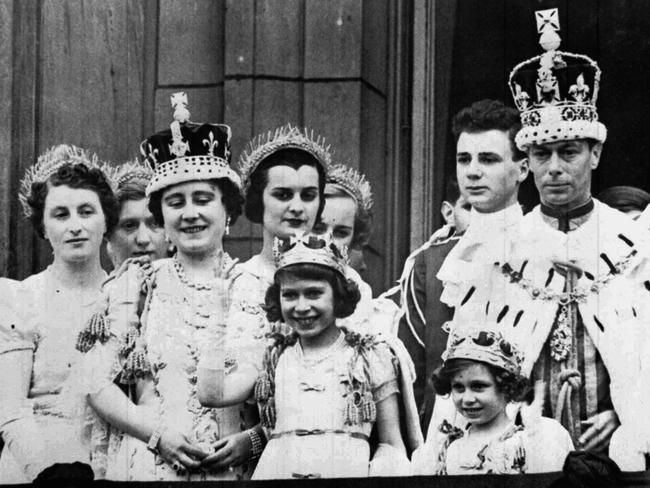
As hundreds of thousands of mourners file through Westminster Hall where the Queen’s body lies in state until her funeral on Monday, they will see beside the crown a wreath made of the late monarch’s favourite flowers picked from her Balmoral garden – white roses, spray white roses, white dahlias and foliage, pine and lavender.
The coffin was borne on a Gun Carriage of The King’s Troop Royal Horse Artillery – poignantly used for the coffins of the late Queen’s mother and father.
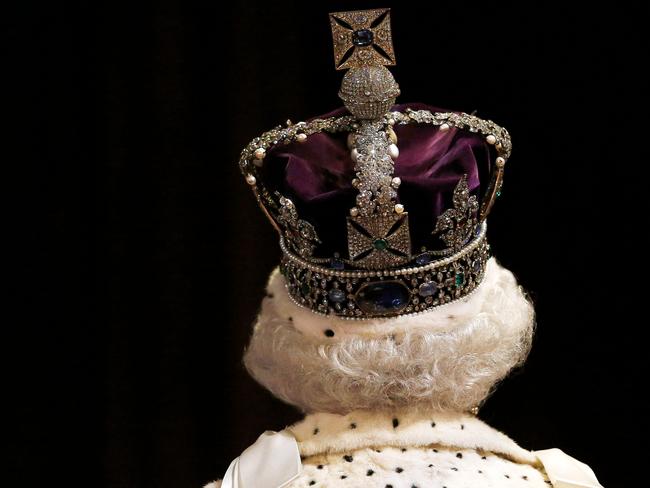
Known as the George Gun Carriage, it carried King George VI from Sandringham Church to Wolferton Station after his death in 1952 and was used in the funeral of the Queen Mother in 2002.
The Gun Carriage has six 13-pounder quickfire guns, built between 1913 and 1918, all of which have seen active service in the First and Second World Wars.
They are used regularly for royal salutes in Hyde Park, Green Park or Windsor Great Park for State Occasions and to mark royal anniversaries and royal birthdays.
– with AFP




